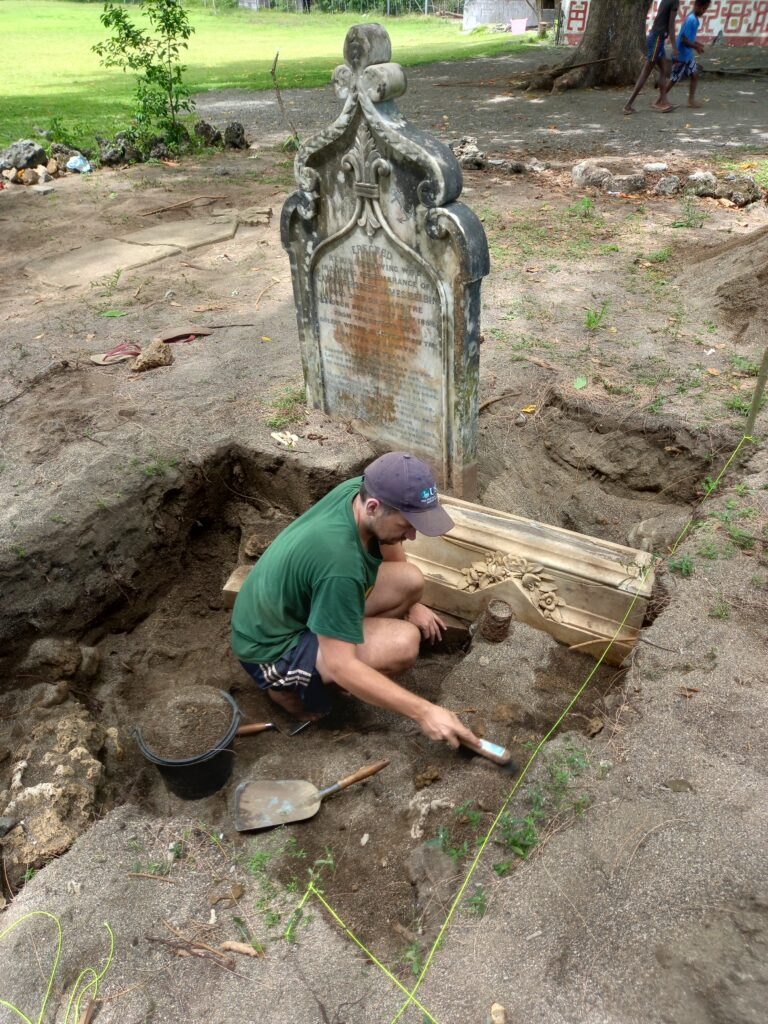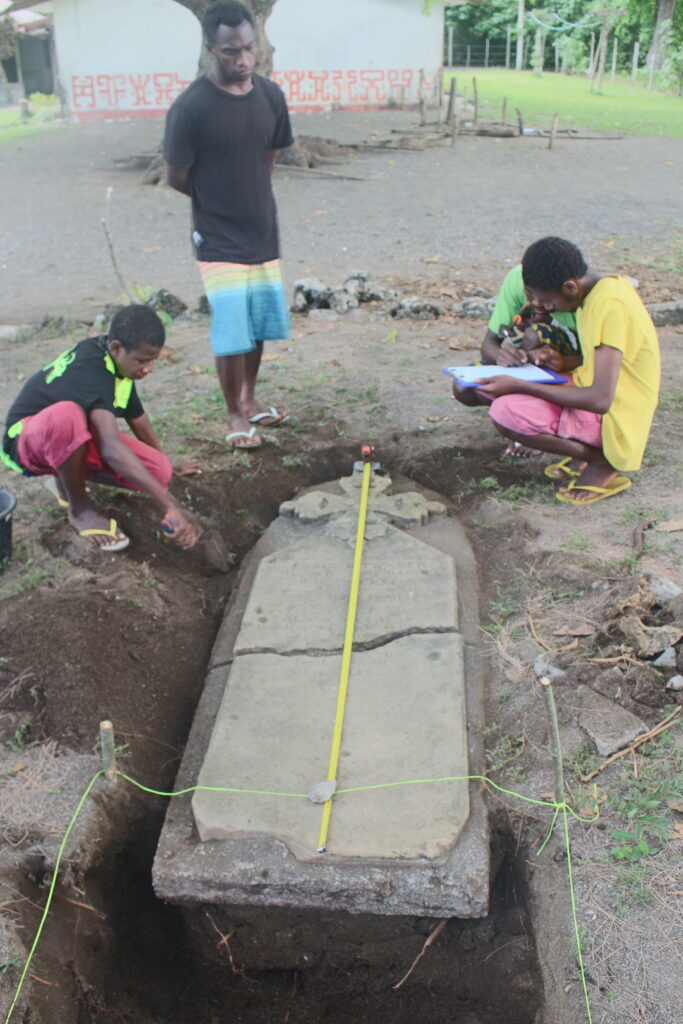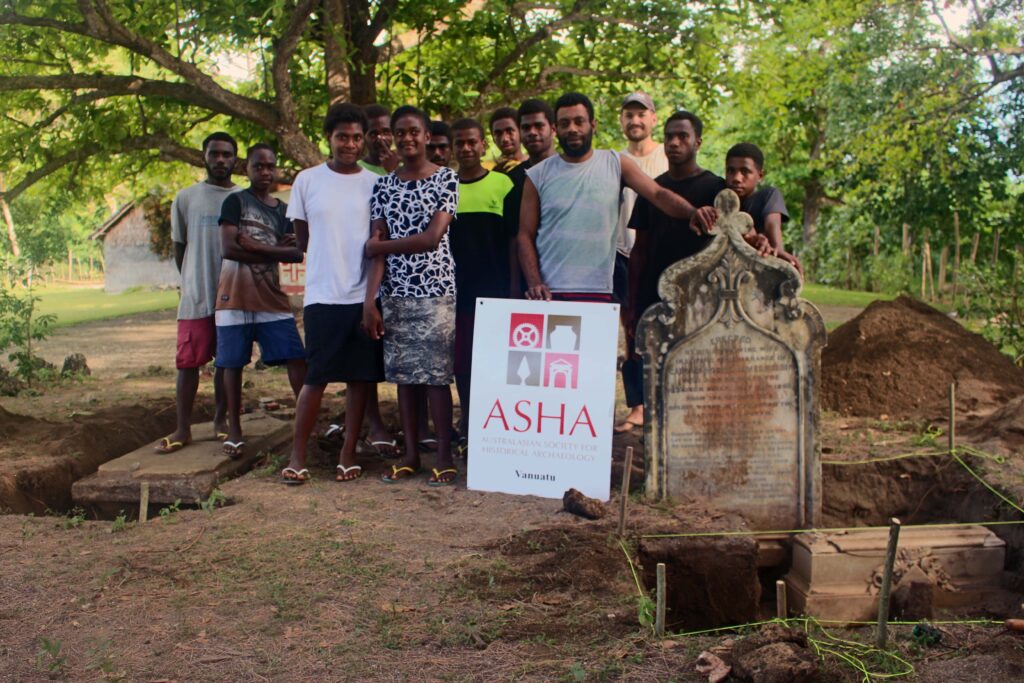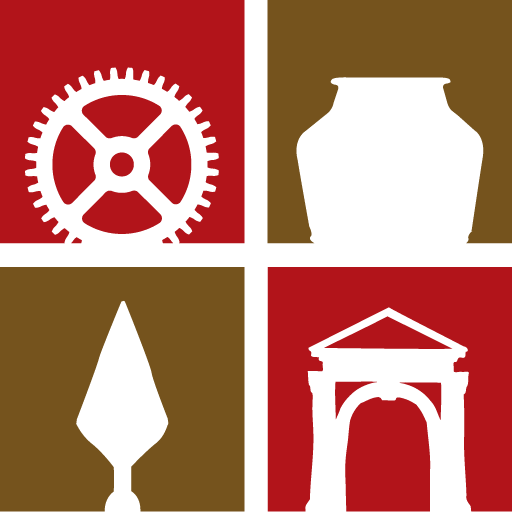Co authored by Robert Henderson, Jack Sarginson, Burumba Public School and community
In a quiet location near the coast and on the far side of the current sports field of the Burumba Public School on Epi Island, Central Vanuatu, is situated a small cemetery with all those interred having died in the nineteenth century. The site is still very much recognised as sacred ground by the local community and although there are only 4 visible headstones at the site, representing 5 souls, they are a poignant reminder and microcosm of some of the major influences and impacts of the nineteenth century in the southwest Pacific, including the labour trade, punitive expeditions, missionisation and health and disease.
Bedford and Henderson visited the site in 2022 and were immediately drawn to an elaborate marble headstone, that of Captain Robert James Belbin, that narrated that he had been killed by natives of nearby Ambrym in 1883. The other headstones at the site, only one of which is still standing vertically, are all related to the family of the missionary Robert Fraser. They are his wife Jessie Fraser and infant children Jessica and David all who died in 1886. The Burumba community was well aware of the missionary family, who were an integral part of their history, but they expressed an interest in finding out more about the family and also Belbin and why he had been buried there. There was also some confusion regards the three headstones that related to the missionary’s family as they suggested that several had been commissioned at different times. Cyclones and earthquakes also appear to have played their part in the current state of the graves with all three missionary headstones showing later repair. Archival research revealed much more detail but there remained some confusion so recording and excavations with the community and students of the school were undertaken in October of 2023.
The Fraser family arrived in Burumba in 1882, sponsored by the Tasmanian Presbyterian Church, and set up their house and church near the coast. The history of this area being used as a cemetery began with the burial in 1883 of the young daughter of a Captain Voss, a labour trader whose family accompanied him on his voyages. Reluctant to bury his daughter at sea they sought a solution with missionary Fraser. He facilitated the burial on mission land at Burumba. In a similar situation Captain Belbin had his wife accompanying him on a recruiting voyage on the ship the Borough Belle in the same year. An altercation on Ambrym resulted in Belbin being shot and dying on his ship. His wife wanted him buried on land and again sought support from Fraser. It was a relationship that was sustained for some time, as letters between the two, held at the National Archives indicate. She sent money and the headstone to the mission. Fraser in turn used some of the money to purchase the land where the burials were located which could then be used from then on formally as a cemetery. He also sent leaves of adjacent trees to Mrs Belbin that are also held at the National Archives. Fraser of course was not expecting that most of his family would be buried at the same location but that is what occurred very soon afterwards.
Excavations revealed that natural hazards had substantially altered the terrain of the cemetery and the condition of the headstones. Th current ground surface is some 40 cm above that when the burials took place due to deposits of regular cyclones. The two sandstone headstones have also been severely eroded by sand blasting from such events. Earthquakes appear to have also impacted the sandstone and thinner marble headstone of the Fraser family. All have been broken and repaired several times. That of Belbin remained intact but had clearly been re-erected several times. As excavation revealed it had shifted substantially off an original floral decorated plinth. The grave of Belbin appeared to have been covered by coral cobbles, while that of Jessie Fraser (and probably her son David) had a lime plaster covering. There may well be other buried at the site but it seems unlikely as no archival record suggests that and James Fraser, although he did return briefly a number of times, moved away from the mission site in 1905. Christianised locals were buried in another cemetery on the other side of the village.




